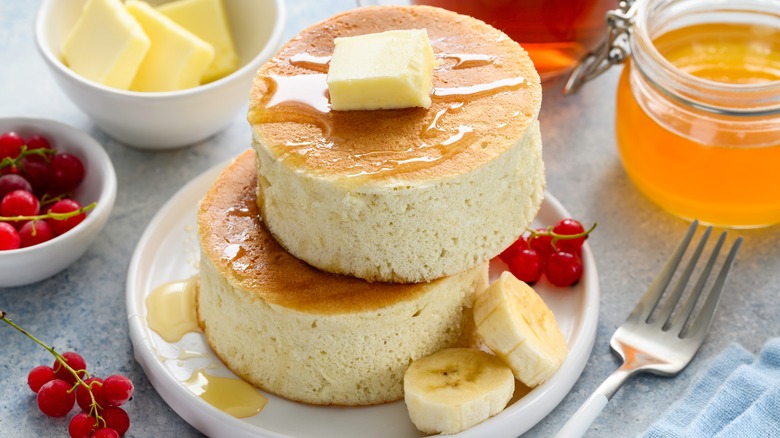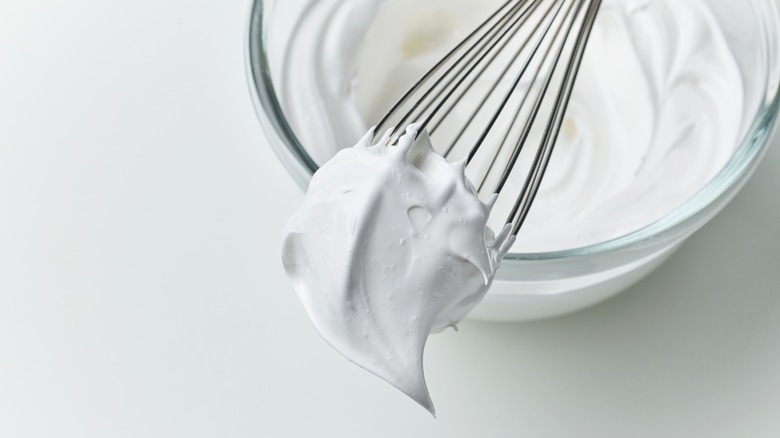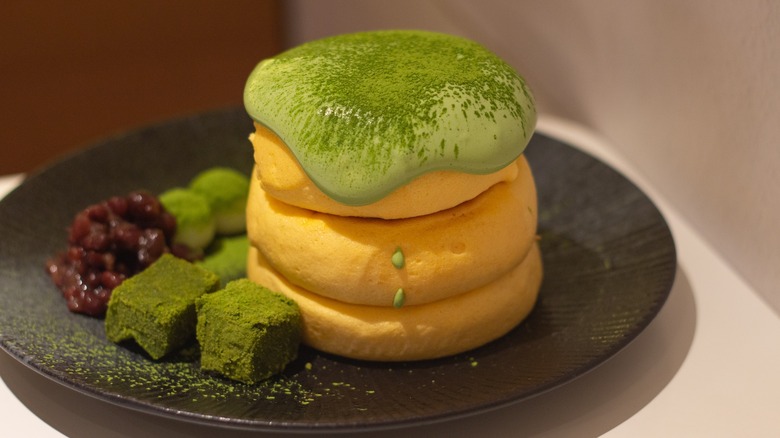What Makes Japanese Soufflé Pancakes Unforgettably Fluffy
A jiggly Japanese soufflé pancake is an example of culinary magic. The cloud-like confections are sweet, delicate, and golden brown on each side, seemingly fragile yet strong enough to withstand being flipped on the stove. They straddle the line between breakfast and dessert for those willing to wait.
Like a traditional soufflé, the griddled cakes rely on whipped egg whites to defy gravity. Cooks beat egg whites, cream of tartar, and sugar into a meringue. Then, the mixture is ever so gently folded into the rest of the batter before griddling, just like in Tasting Table's soufflé pancakes recipe. To replicate the towering Japanese masterpieces, however, be sure to cook the batter in greased ring molds placed directly in the pan.
The added support of the metal rounds is what makes each pancake especially fluffy, giving it support as it cooks slowly over low heat without deflating or oozing. While the exterior warms to a toasty brown, the interior stays soft and mousse-like. To accomplish this, you'll need to take your time with each round of cakes so the gentle temperature can penetrate and cook the batter through without burning.
More secrets to achieve a fluffy soufflé pancake
This is a great time to follow Jacques Pépin's foolproof bowl tip for perfect soufflés and use a copper bowl if you have it. Creating a meringue takes patience and precision, so try to set your egg whites up for success by using fresh, cold eggs, which whip into the most stable foam. Follow the cardinal rule of folding and be careful not to overmix the batter as you blend the flour-yolk mixture.
Once you're ready to cook, there are a few more tricks to help your batter set up. Use a piping bag (or make your own using a Ziplock bag) to portion the mixture carefully and quickly onto the hot pan. If you'd prefer not to grease the molds, you can also line them with a ring of parchment paper to avoid sticking and dirtying the rings.
Once your portions are over the heat, add a spoonful of water to the pan and cook covered to ensure the petit soufflés get a touch of steam. Our final suggestion is easy to follow: Eat them soon after they're cooked to enjoy them at their wiggliest. Like any airy confection, the brunch dish will deflate somewhat if they're left to sit around.
Putting your spin on the breakfast food
Each Japanese-style pancake is a delight on its own, but the mild and creamy treat (which is so delicate you can eat it with a spoon) benefits from additional sauces and flavorings. A favorite approach to dressing up the pancakes is to top them with a cascading, overflowing sauce for a striking visual. As for the flavors themselves, you can never go wrong with the classic butter and maple syrup or a rich, bright matcha sauce and whipped cream.
Cafes often serve their pancakes with a dollop of red beans, which is also the underrated ingredient your French toast needs. The sweet, creamy ingredient highlights the eggy richness of the pancakes. Or, you can embrace contrasting textures by adding brown sugar-flavored tapioca pearls, or boba.
Another approach is to nudge the breakfast food into dessert territory by replicating other mousse-like desserts. A coffee-infused chocolate sauce and a dollop of sweetened mascarpone can evoke tiramisu. Or, make a pastry cream and break out the blowtorch to mimic crème brûlée. You could also head the opposite direction if you prefer a savory brunch and pair the cakes with fried chicken and hot honey.
Static Media owns and operates Food Republic and Tasting Table.



